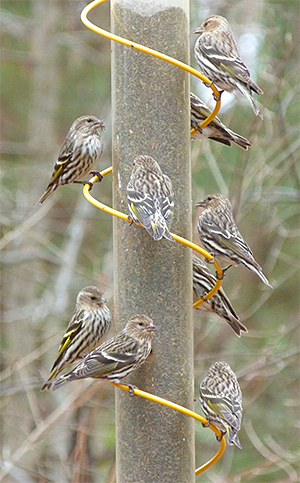
Pine siskins are finches. They are close in size and shape to American goldfinches, a common year-round bird here in the Piedmont. Siskins nest far to the north and west of our area in coniferous or mixed forests. Here, they are considered winter finches because they only show up in winter, although one or two may linger well into spring.
Siskins are, however, sporadic in their visitations, some years they’re here, some years they’re not. The winter of 2012-2013 was a good year to see siskins. We had many here at our feeders. People across the Carolinas were reporting them in the hundreds, even thousands, at their feeders.
This winter, they’ve only been at our feeders for several days now, but if the weather stays like it is (cold) they may stick around. If you want to see them, stop by the Bird Feeders in Catch the Wind. Sit down in one of the Adirondack chairs at the feeder station and watch the long tubular feeder with the yellow spiral perches, you’ll probably see more than just a few.
You’ll also see a fair number of goldfinches with them, both prefer the nyger seed to the sunflower in the other feeders at the station.
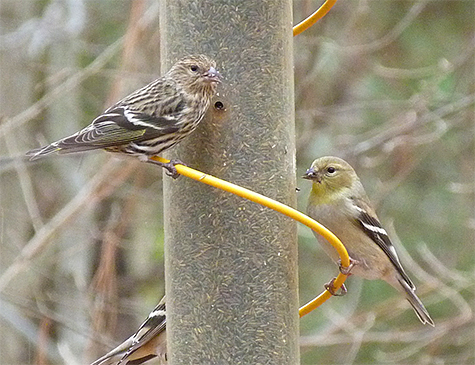
A catkin is a long, tubular, pendulous cluster of flowers of all one sex. Our hazel alders, of which we have three growing on the north side of the Wetlands, are currently blooming. I should say, two of those plants are blooming, the third is a week behind schedule.
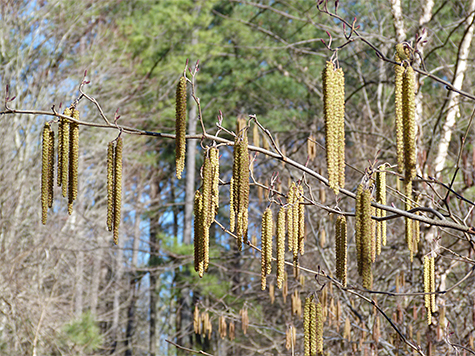
The yellow-green male catkins pollinate the female flowers through the action of the wind. The female flowers are small and red, and directly above the male flowers.
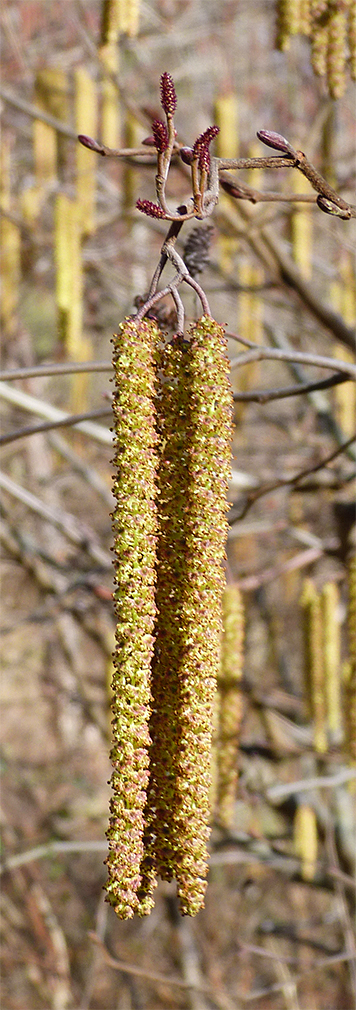
If you find yourself sneezing in February it may be because of this plant. There’s plenty of airborne pollen in and around these plants when in bloom, but it doesn’t last long.
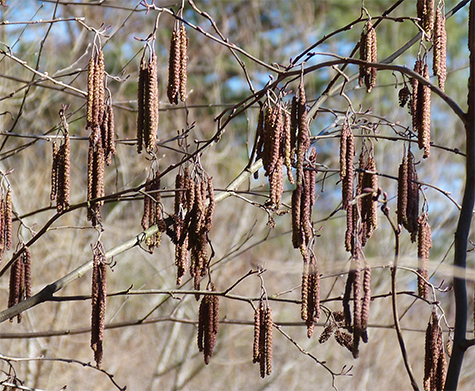
After the female flowers are pollinated they will grow into tiny cone-like structures which contain the plant’s seeds. The “cones” will remain on the plant till the following winter (the cones present now, were from last year’s pollination ).
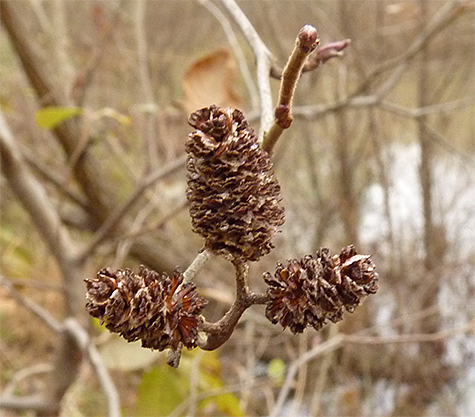
Alders typically grow alongside rivers, streams and ponds.
Both siskins and catkins are waiting for you in Catch the Wind and Explore the Wild. Come on out and have a look.